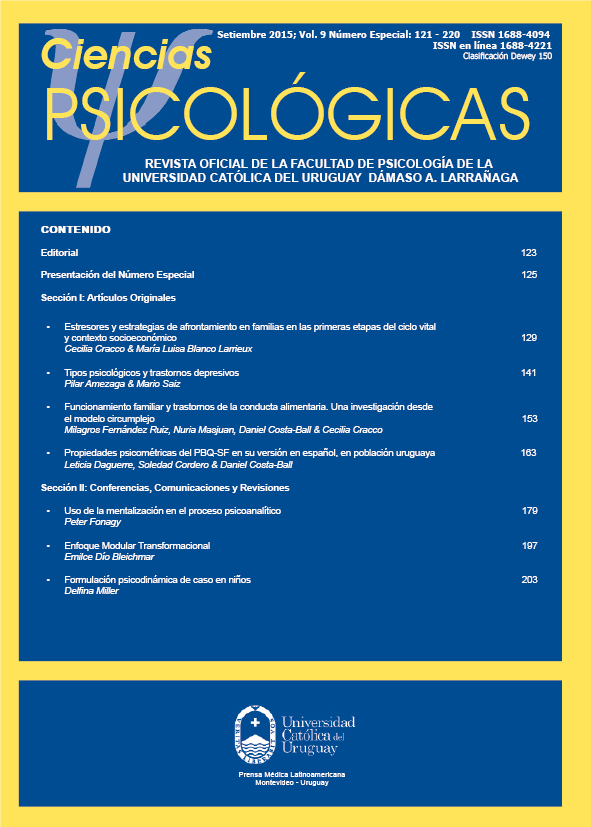PSYCHODYNAMIC CASE FORMULATION FOR CHILDREN
DOI:
https://doi.org/10.22235/cp.v9iEspec.443Keywords:
case formulation, children’s clinic, psychodynamic diagnosisAbstract
The psychodynamic dimensional case formulation for children is crucial in terms of the frequent difficulty to make categorical diagnoses in the period of life characterized by change. To make a clinical formulation of a child we will take particular account of the level of development, the environment in which he/she grows, his/hers performance in different areas and his/hers relationships both with peers and caregivers. All these aspects will suffer permanent changes related to child growth and acquisition of what will be their personality traits that define their sense of self. These elements, especially the rapid rate of change, often generate a difficulty to define a diagnosis and to differentiate it as more reactive, intrapsychic or relational. Emphasizing the level and characteristics and operating conditions we will consider clinical formulation as a photo taken at a certain time that will be useful as a reference for subsequent evaluations. We will put the emphasis on the child tools and on the effect that mental dynamics may have on development. We will detail how to systematize this information and offer both examples and a guide of questions that can help us in its realization.Downloads
References
Altman, M. (compiladora), 2014. “Time for Change: Tracking Transformations in Psychoanalysis The Three-Level Model”. Karnac Books, London.
Dio Bleichmar, Emilce. (2005) Manual de psicoterapia de la relación padres e hijos. Bs. As. Paidós.
Klein, M. (1962) La técnica psicoanalítica del juego. Nuevas direcciones en psicoanálisis. Bs. As. Paidós.
Miller, D. (2013). “Las Huellas del afecto. Estudio de la incidencia de la regulación afectiva en el desarrollo de la personalidad”. Ed.Magro. Montevideo.
PDM. (2006). Psychodynamic Diagnostic Manual. Silver Spring: Alliance of Psychoanalytic Organizations.
Winnicott, D. (1982) Realidad y juego. Barcelona: Gedisa.
















